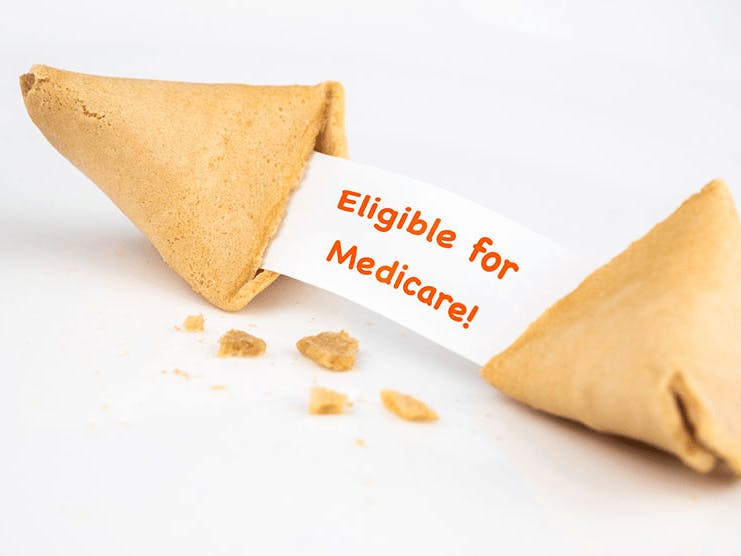
U.S. citizens aged 65 or older, as well as those under 65 with qualifying disabilities, are eligible for Medicare.
In general, Medicare is available to those who are age 65 or older, have a qualifying disability, or have End-Stage Renal Disease. However, there are different eligibility criteria depending on which Part you are enrolling in, and requirements to be met based on your specific circumstances.
For 55 years, Medicare has been providing health and medical insurance coverage for millions of Americans. In 2019 alone, 61 million people were enrolled in Medicare. However, qualifying for Medicare is not automatic, and you are not automatically enrolled, so it’s important to understand if and when you’re eligible, and how and when to enroll, in order to ensure you have proper coverage when you need it.
Medicare Eligibility
Original Medicare coverage is made up of Part A (hospital insurance) and Part B (medical insurance). You also have options to enroll in Part C (Medicare Advantage) and Part D (prescription drug coverage).
Who Is Eligible for Part A and B?
In order to be eligible for Part A and Part B:
- You must be a U.S. citizen, or permanent legal resident who has lived in the U.S. for at least five years.
- You or your spouse worked and paid Medicare taxes for at least 10 years.
In addition, you must meet at least one of the following criteria:
- Turning 65 (or older) and eligible for Social Security.
You may sign up for Medicare beginning three months before the month you turn 65. If you are close to turning 65 and are not getting Social Security or Railroad Retirement Board (RRB) benefits, you must sign up for Medicare. Even if you are eligible for premium-free Part A coverage, you still must enroll.
If you are receiving benefits from Social Security or RRB for at least four months before you turn 65, you’ll be automatically enrolled in Part A and Part B starting the first day of the month you turn 65.
- Permanently disabled and received (or been entitled to) disability benefits for at least two years (24 months).
After 24 months of receiving disability benefits from Social Security or RRB, you’ll automatically be enrolled in Part A and Part B. The two year period begins the first month you receive an SSDI check, and you will automatically be enrolled in Medicare on the first day of the 25th month.
- Have End-Stage Renal Disease (ESRD).
With ESRD, you have permanent kidney failure that requires dialysis treatment or a kidney transplant. If this is the case, you must sign up for Medicare - you are not automatically enrolled. You must also:
- Have worked the required amount of time under Social Security, RRB, or as a government employee; or,
undefinedundefined
Your coverage then begins:
- The third month after the month in which a regular course of dialysis begins; or,
undefinedundefinedundefined - Have Lou Gehrig’s Disease.
If you have Lou Gehrig’s disease, also known as Amyotrophic Lateral Sclerosis or ALS, you automatically get Part A and Part B the month your disability benefits begin. There is no waiting period.
If you or your spouse did not pay Medicare taxes while you worked, but you meet other eligibility criteria, you are able to buy Part A.
If you or your spouse are still employed when you turn 65, you may qualify for and enroll in Medicare if it is the primary insurance, though in most cases your employer’s insurance remains primary until you no longer work there. If Medicare would be secondary, you can waive enrollment until you lose employer coverage.
You are eligible for free Part A coverage if you’ve worked a specified number of quarters and file an application for Social Security or RRB benefits. Your eligibility for free premium is based on your earnings for those quarters. You may not be eligible if you never worked and never paid Medicare taxes, but you can still purchase Part A coverage (with a premium). If you are not eligible for a free premium for Part A, you must:
- File an application to enroll by contacting Social Security.
- Enroll during a valid enrollment period.
- Enroll in or already have Part B.
Who is eligible for Part C?
Part C, or Medicare Advantage, is another way to get Part A and Part B benefits. To be eligible for Part C, you must also be eligible for Part A and Part B.
Medicare Advantage plans are offered through private insurers to those who:
- Are already enrolled in Medicare Part A and Part B.
- Reside within the plan’s service area.
Who is eligible for Part D?
Part D covers prescription drugs and is offered through private insurers who are approved by Medicare. In order to be eligible for enrollment in a Part D plan, you must:
- Have Medicare Part A and/or Part B.
- Live in the service area for the drug plan.
Medicare Enrollment Periods
If you are already getting benefits from Social Security or RRB, you’ll be automatically enrolled in Original Medicare Part A and Part B starting the first day of the month you turn 65. You’ll also be automatically enrolled if you have a qualifying disability.
You are eligible to enroll in premium-free Part A at any time after you are first eligible for coverage.
Otherwise, depending on your circumstances, there are a few times per year when you can sign up for Medicare. Once you are enrolled, you will receive the “Welcome to Medicare” package that gives you information you need about coverage, as well as your red, white and blue Medicare card.
Initial Enrollment Period
If you’re eligible for Medicare when you turn 65, you are able to sign up during your Initial Enrollment Period. This is a 7-month period surrounding your birthday, including the three months before the month you turn 65, the month you turn 65, and the three months after the month you turn 65.
If you do not pay a premium for Part A, it’s mandatory to enroll unless you also give up your Social Security or Railroad Retirement Board (RRB) benefits. In most cases, you should only decline Part B if you have group health insurance from an employer you or your spouse is actively working at, and that insurance is primary to Medicare, meaning it pays before Medicare does.
If you do not sign up for Part B when you’re eligible, and you do not have other coverage in place, you’ll have to pay a late enrollment period.
You should sign up for Part A and Part B when you’re first eligible to avoid a delay in coverage. If you wait until after the month you turn 65, your coverage may be delayed depending on your birthday.
If you enroll during the first three months of your Initial Enrollment Period:
- If your birthday is not the first day of the month, your coverage starts the first day of your birthday month.
- If your birthday is the first day of the month, your coverage will start the first day of the month prior.
If you enroll during the month you turn 65, your coverage will start one month after your enrollment. If you enroll one month after you turn 65, the coverage starts two months after enrollment. For enrollment two or three months after you turn 65, coverage begins three months after enrollment.
Special Enrollment Period (SEP)
If you don’t enroll in Part A or B during your Initial Enrollment Period, you may have an opportunity to enroll during a Special Enrollment Period. However, you must meet certain requirements to be eligible, such as:
- If you’re covered under a group health plan based on current employment. In this case, you can sign up for Part A and/or Part B any time as long as you or your spouse is working, and you’re covered by a group health plan through the employer.
If you enroll during an SEP, your coverage will begin the month after Social Security gets your completed request.
You are not eligible for an SEP if you have COBRA or retiree health plan coverage that ends, if you have Veterans Affairs or Individual Health Insurance Marketplace coverage, or if you have End-Stage Renal Disease (ESRD).
You can also enroll in a Part C Medicare Advantage Plan during an SEP if you qualify.
General Enrollment Period (GEP)
If you don’t enroll when you’re first eligible, and you don’t qualify for an SEP, you can still enroll in Part A and Part B during the Medicare General Enrollment Period, from January 1 through March 31. In this case, coverage will begin July 1 of that year.
In most cases, if you enroll during the GEP, you will have to pay a late enrollment penalty for as long as you have Part B.
Annual Enrollment Period (AEP)
The Annual Enrollment Period is specifically for signing up for a Part C Medicare Advantage plan. You can enroll from October 15 to December 7 for coverage beginning January 1 of the following year.
What Is Medicare Supplement?
Medicare Supplement, or Medigap, is a supplemental insurance that helps fill “gaps” in Original Medicare. While Medicare pays for much of the hospital and medical costs you may need, it doesn’t cover everything, which is why some people choose to purchase a Medigap policy.
These policies are offered by private insurance companies and help pay some costs such as copayments, coinsurance, and deductibles.
In order to be eligible for a Medigap policy, you must:
- Have Medicare Part A and Part B.
- Pay the insurance company the policy’s monthly premium in addition to the monthly Part B premium you pay Medicare.
- Buy a Medigap policy from an insurance company licensed in your state to sell them.
Keep in mind that Medigap policies do not cover everything and may lack coverage for items such as long-term care, vision or dental, hearing aids, eyeglasses, and more. If you’re interested in coverage for those items, consider a Part C Medicare Advantage plan.
Additional Resources
How Do I Sign Up for Medicare?
Medicare.gov
Medicare 101: Understanding the Basics of Medicare
ClearMatch Medicare



